
-
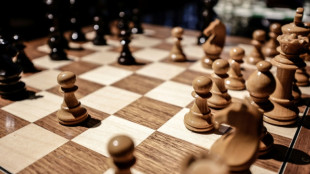 Chess mourns US grandmaster dead at 29
Chess mourns US grandmaster dead at 29
-
Nigerian monarch takes on oil giant in search of environmental justice
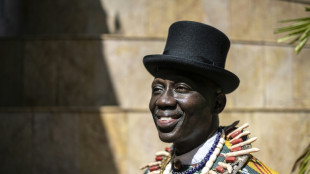
-
 Paris verdict due in TotalEnergies 'greenwashing' case
Paris verdict due in TotalEnergies 'greenwashing' case
-
Indonesia to repatriate British grandmother on death row: govt source

-
 Virginia Giuffre shines light on Epstein ordeal in new memoir
Virginia Giuffre shines light on Epstein ordeal in new memoir
-
France and Europe: fertile AI training ground?

-
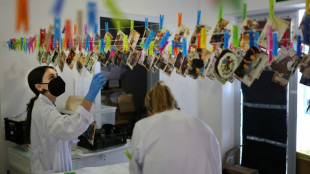 After deadly floods, Spaniards fight to save photos
After deadly floods, Spaniards fight to save photos
-
Trump warns Hamas not to breach Gaza deal as Vance heads to Israel

-
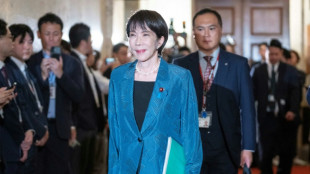 China hawk Takaichi named Japan's first woman PM
China hawk Takaichi named Japan's first woman PM
-
Sanae Takaichi, Iron Lady 2.0 poised to be Japan PM

-
 Liverpool's Ekitike returns to face floundering Frankfurt
Liverpool's Ekitike returns to face floundering Frankfurt
-
Cape Verde captain getting to grips with 'dream' World Cup qualification

-
 'Enhancing the game': Football Manager includes women's clubs
'Enhancing the game': Football Manager includes women's clubs
-
France's ex-president Sarkozy to be jailed over Libya funding conviction

-
 Blue Jays sink Mariners to reach World Series
Blue Jays sink Mariners to reach World Series
-
France intensifies hunt for Louvre raiders
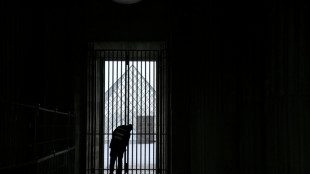
-
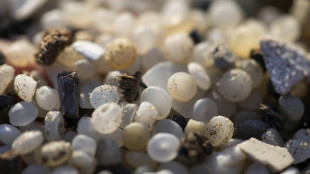 EU takes aim at plastic pellets to prevent their nightmare cleanup
EU takes aim at plastic pellets to prevent their nightmare cleanup
-
Equities rally on China-US hopes, new Japanese PM lifts Tokyo

-
 'Dream come true' for US pianist Eric Lu after Chopin competition win
'Dream come true' for US pianist Eric Lu after Chopin competition win
-
Nepal's 'hidden' mountains draw new wave of climbers

-
 Climate change, population growth threats as malaria fight stalls
Climate change, population growth threats as malaria fight stalls
-
EU timber imports linked to deforestation on Indonesia's Borneo: NGOs

-
 Canada crime bill and rap group fracas spark free-speech debate
Canada crime bill and rap group fracas spark free-speech debate
-
Peru's Gen Z lead movement against crime, political paralysis
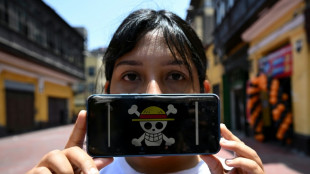
-
 Migrants brace for hostile climate after Chile's election
Migrants brace for hostile climate after Chile's election
-
Trump demolishes part of White House for new ballroom

-
 Nuno admits Hammers 'have a problem' after Brentford defeat
Nuno admits Hammers 'have a problem' after Brentford defeat
-
Maccabi Tel Aviv to decline tickets for European tie at Aston Villa

-
 US, Australia sign rare earths deal as Trump promises submarines
US, Australia sign rare earths deal as Trump promises submarines
-
Former Bucs running back Martin died in custody: police

-
 US confirms Mexico, Costa Rica, Jamaica as co-hosts for 2031 Women's World Cup bid
US confirms Mexico, Costa Rica, Jamaica as co-hosts for 2031 Women's World Cup bid
-
Mourinho expects more Newcastle silverware after League Cup triumph

-
 Crisis-hit Argentina inks $20 bn rescue with US
Crisis-hit Argentina inks $20 bn rescue with US
-
US appeals court says Trump can deploy soldiers in Portland

-
 Colombia awaits ruling on ex-president Uribe's house arrest
Colombia awaits ruling on ex-president Uribe's house arrest
-
Disgraced Andrew may face more legal woes: UK biographer

-
 Dembele, Marquinhos return for PSG's trip to Leverkusen
Dembele, Marquinhos return for PSG's trip to Leverkusen
-
Bolivia's president-elect says will resume ties with US after nearly two decades

-
 Shaheen Afridi appointed Pakistan ODI captain for South Africa series
Shaheen Afridi appointed Pakistan ODI captain for South Africa series
-
Howe looking forward to facing 'incredible' Mourinho in Champions League

-
 Athapaththu conjures miracle as Sri Lanka snatch victory over Bangladesh
Athapaththu conjures miracle as Sri Lanka snatch victory over Bangladesh
-
Trump to Australian ambassador: 'I don't like you either'

-
 Servers, software and data: how the cloud powers the web
Servers, software and data: how the cloud powers the web
-
Trump says Australia will get submarines as PM visits

-
 Athletes swap skis for skates in a glimpse of winter sport's future
Athletes swap skis for skates in a glimpse of winter sport's future
-
Brazil greenlights oil drilling in sensitive Amazon region

-
 Struggling Rangers appoint Rohl as new manager
Struggling Rangers appoint Rohl as new manager
-
Louvre heist: five things to know about missing jewellery
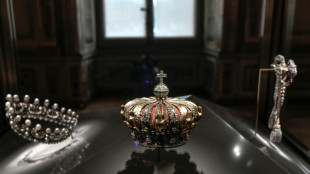
-
 Stock markets climb as China-US trade fears ease
Stock markets climb as China-US trade fears ease
-
Colombia recalls ambassador to US as Trump-Petro feud intensifies
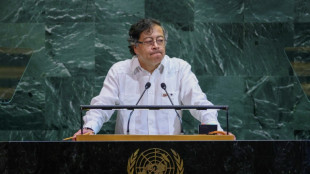

Louvre heist: five things to know about missing jewellery
Here are five things to know about the eight priceless pieces of jewellery stolen in an audacious heist from the Louvre Museum in Paris on Sunday.
- Illustrious -
The stolen pieces span two centuries of history and belonged to queens and empresses of France.
Empress Eugenie's tiara and crown were crafted by the renowned jeweller Alexandre-Gabriel Lemonnier shortly after her marriage to Napoleon III in 1853.
Both pieces were stolen, but the crown was abandoned by the thieves as they fled.
"This tiara is the one that she wore almost daily at court and that can be seen in her official portraits. She valued it greatly," Pierre Branda, a historian and scientific director of the Napoleon Foundation, told AFP.
Also snatched from the museum was a necklace and earrings sapphire set worn by Queen Marie Amelie, wife of Louis-Philippe, the French king from 1830 to 1848, and Queen Hortense, mother of Napoleon III.
Vincent Meylan, a historian specialising in jewellery, said Queen Hortense inherited the set from her mother, Empress Josephine, who was Napoleon I's first wife.
Some experts also claim that it originated from Queen Marie Antoinette.
"It really is a part of France's history," said Meylan.
A necklace and a pair of emerald earrings were also taken -- they were a wedding gift from Napoleon I to his second wife, Empress Marie Louise, and made by her official jeweller, Francois-Regnault Nitot.
- Exceptional -
Even without their illustrious owners, the piece deserved their place in the Louvre as they are "exceptional works of art", said Didier Rykner, editor-in-chief of the site La Tribune de l'Art.
Made by the great jewellers of the era, the jewels combine diamonds, pearls and precious stones to create spectacular compositions.
The so-called "reliquary" brooch of Empress Eugenie, mounted in 1855 by Paul-Alfred Bapst, is made up of 94 diamonds, including a rosette of seven diamonds around a central solitaire formed by two heart-shaped diamonds bequeathed to King Louis XIV by his chief minister Cardinal Mazarin.
Empress Eugenie's tiara features nearly 2,000 diamonds and more than 200 pearls. The sapphire necklace is made up of eight midnight blue precious stones and 631 diamonds, while the emerald necklace has 32 stones and 1,138 diamonds, according to the Louvre's website.
- Recent -
Despite their age, most of the jewels only became part of the Louvre collection in recent decades.
Of the eight stolen items, seven were acquired in the past four decades.
The emerald set was acquired in 2004 with the help of the Heritage Fund and the Society of Friends of the Louvre.
Marie Amelie's sapphire necklace was acquired in 1985, while Empress Eugenie's tiara and her large corsage bow were acquired in 1992 and 2008.
- Unsellable -
France's Ministry of Culture has said the jewels have a "priceless heritage value".
"They are invaluable in terms of heritage," said Rykner. "However their price can be assessed."
The items were sold relatively recently and their sales are documented, but the prices are not disclosed publicly.
"The correct term is unsellable," said Meylan. Reselling such catalogued and identifiable jewels in their current state would be impossible, he added.
- Unset -
As such, experts are warning that the historical pieces could be stripped down, with the stones and pearls unset and remounted to create other jewellery.
"If we don't find these jewels very quickly, they will disappear for sure," said Meylan.
"This is where treasure becomes priceless. We risk losing pieces of France's history."
C.Bruderer--VB
